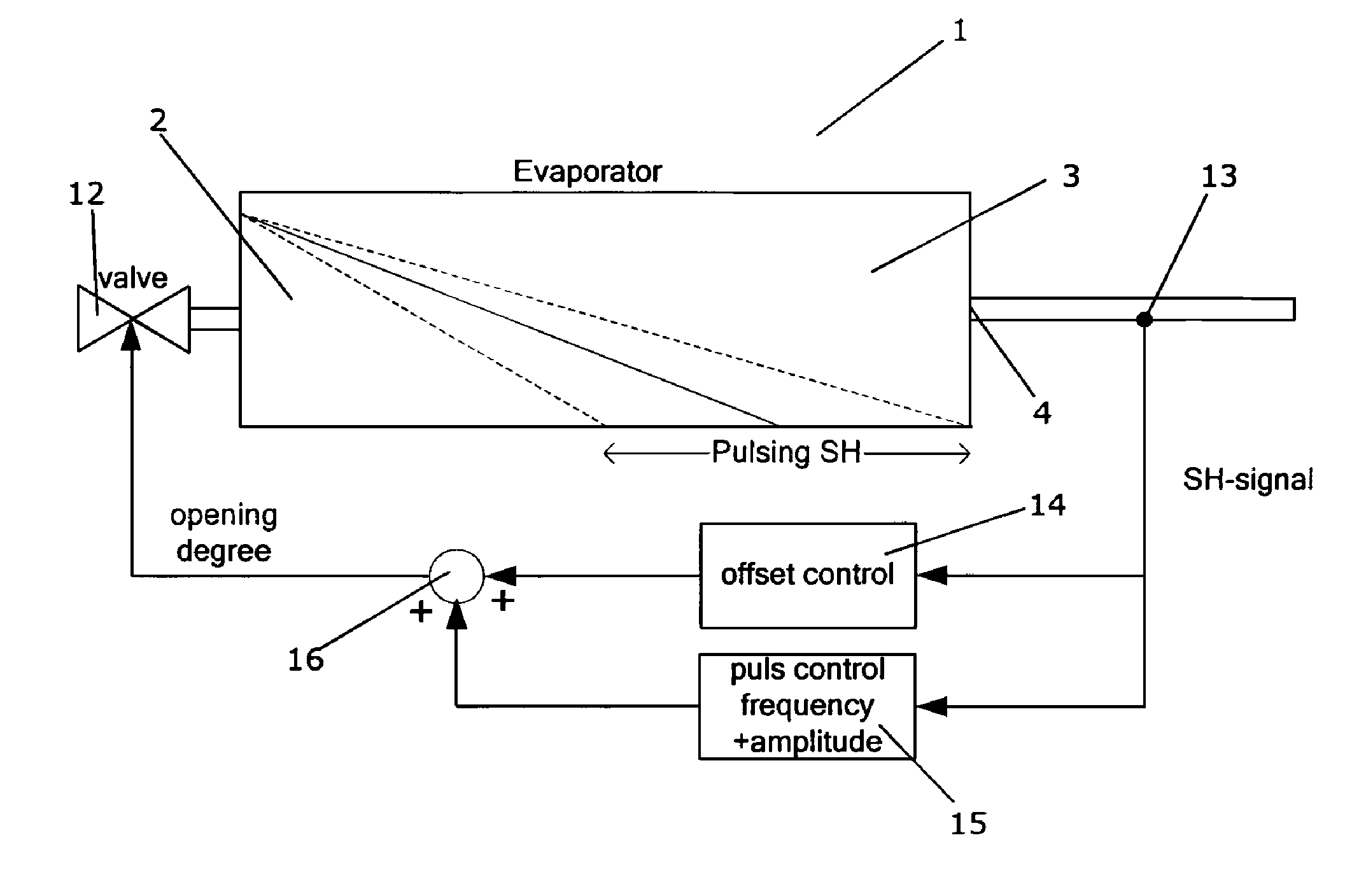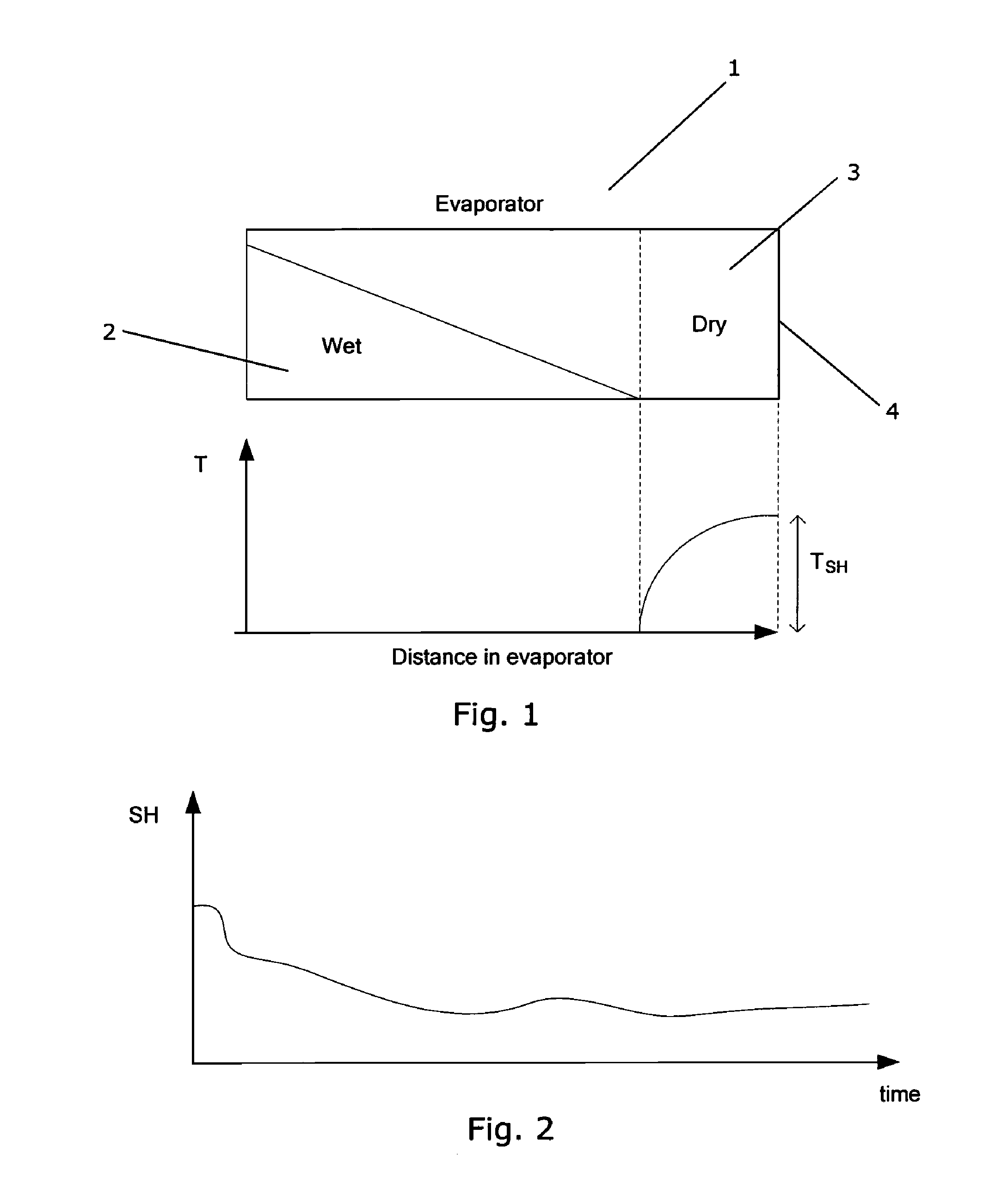Method for controlling a flow of refrigerant to an evaporator
- Summary
- Abstract
- Description
- Claims
- Application Information
AI Technical Summary
Benefits of technology
Problems solved by technology
Method used
Image
Examples
Embodiment Construction
[0035]FIG. 1 shows an evaporator 1 during operation of a refrigeration system. The evaporator 1 has a first region 2 and a second region 3. The first region 2 contains refrigerant in a liquid / mixed state, i.e. the refrigerant in the first region 2 of the evaporator 1 is either in a liquid phase or it is a mixture of liquid and gaseous refrigerant. The second region 3 contains refrigerant in a purely gaseous phase. Accordingly, evaporation of refrigerant takes place in the first region 2 of the evaporator 1, but not in the second region 3 of the evaporator 1, i.e. only the part of the evaporator 1 which corresponds to the first region 2 is actually utilised.
[0036]The graph shown below the evaporator 1 illustrates the superheat value of the refrigerant as a function of position along the evaporator 1. It can be seen that the superheat value is zero in the first region 2 of the evaporator 1. As soon as the boundary between the first region 2 and the second region 3 is reached, the supe...
PUM
 Login to View More
Login to View More Abstract
Description
Claims
Application Information
 Login to View More
Login to View More - R&D
- Intellectual Property
- Life Sciences
- Materials
- Tech Scout
- Unparalleled Data Quality
- Higher Quality Content
- 60% Fewer Hallucinations
Browse by: Latest US Patents, China's latest patents, Technical Efficacy Thesaurus, Application Domain, Technology Topic, Popular Technical Reports.
© 2025 PatSnap. All rights reserved.Legal|Privacy policy|Modern Slavery Act Transparency Statement|Sitemap|About US| Contact US: help@patsnap.com



